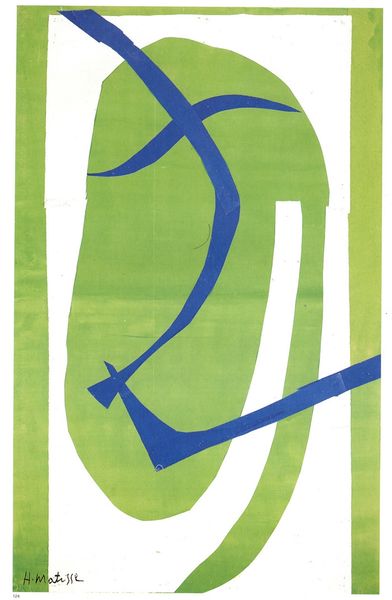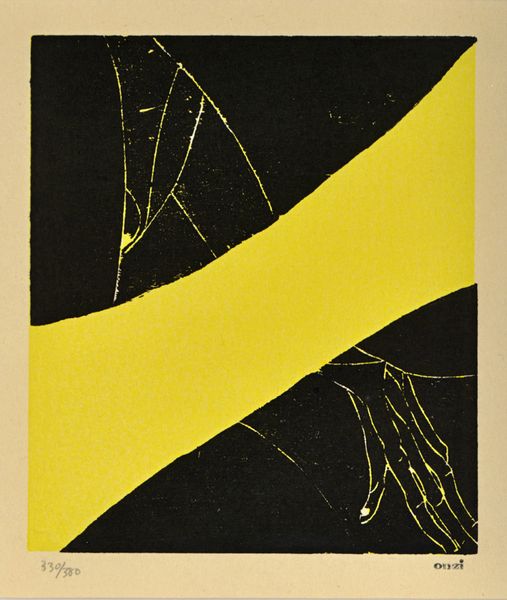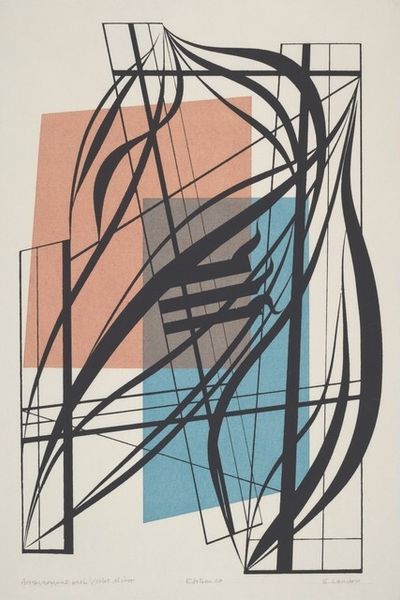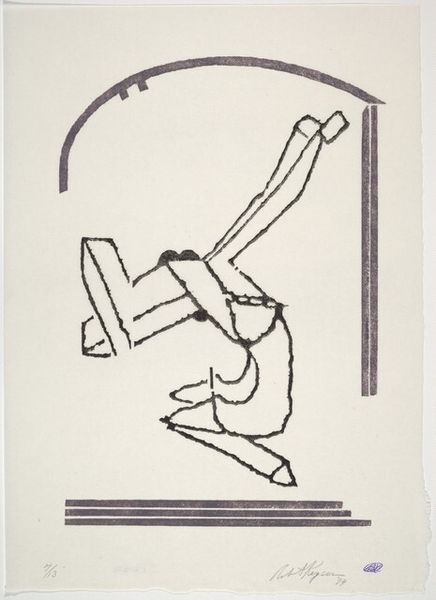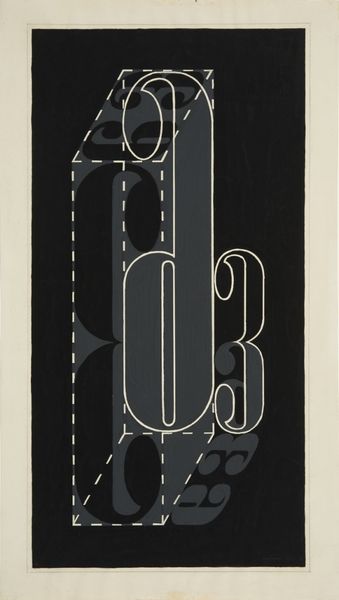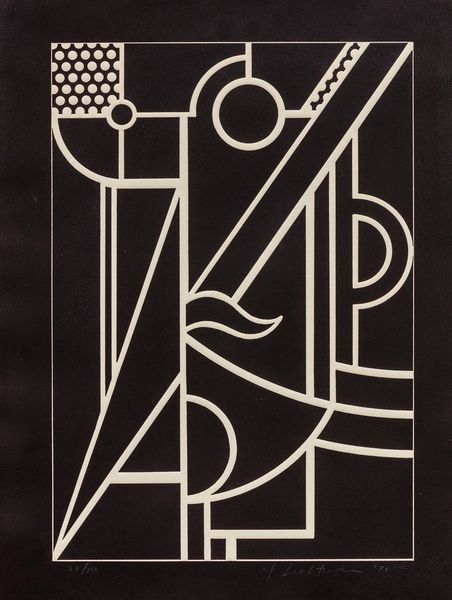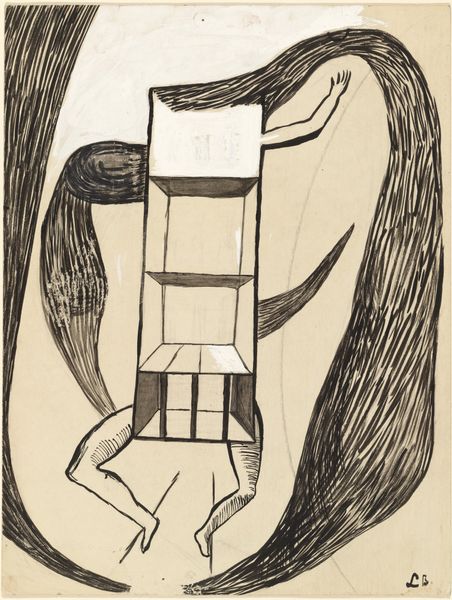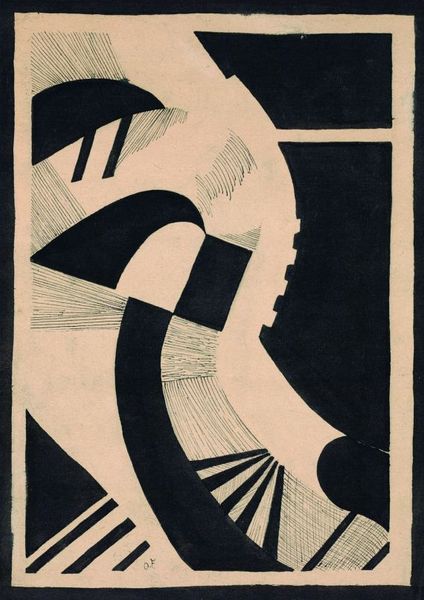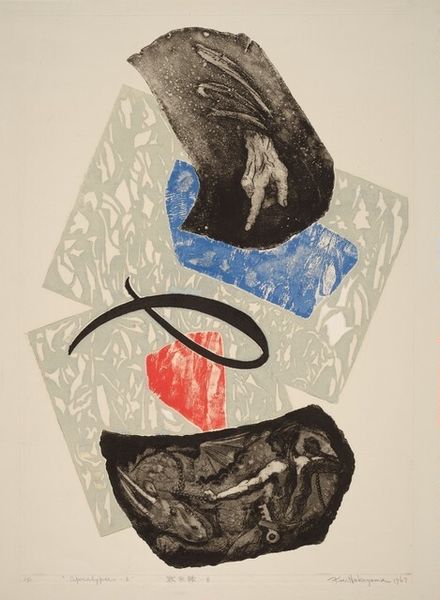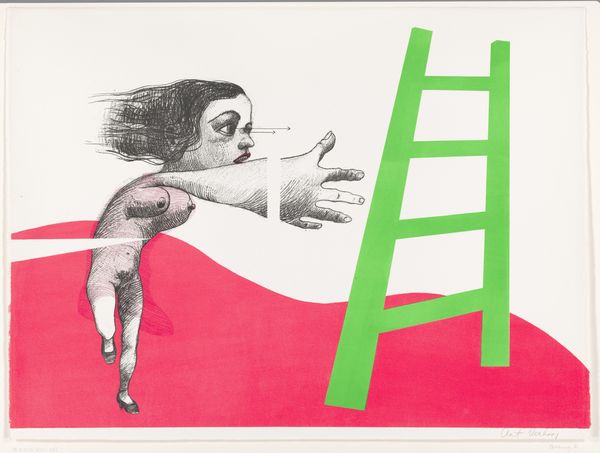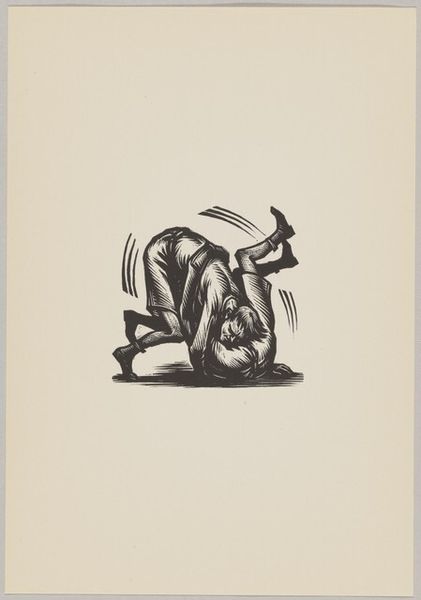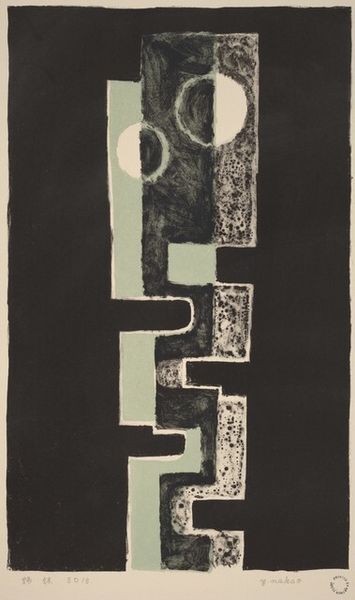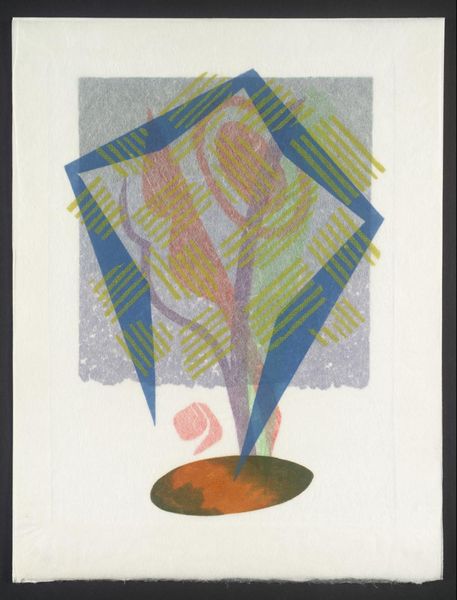
# print
#
figuration
#
geometric
#
abstraction
#
line
#
modernism
Dimensions: image: 51.1 x 33.7 cm (20 1/8 x 13 1/4 in.) sheet: 51.1 x 33.7 cm (20 1/8 x 13 1/4 in.)
Copyright: National Gallery of Art: CC0 1.0
Mary Callery created "Tara," a lithograph, sometime in the mid-20th century. It shows a stylized figure playing a harp, rendered with bold colors and simplified forms. This was a period when artists across Europe and America were grappling with the legacy of modernism and its relationship to classical traditions. Callery was an American expatriate who lived in Paris, becoming part of an artistic and social circle that included figures such as Picasso and Matisse. "Tara" reflects the influence of European modernism, particularly in its abstraction of the human form. Yet the subject is ancient: Tara is an Irish goddess. The choice of subject suggests a desire to connect with ancient traditions in a modern world. The artist may have been influenced by the Celtic Revival, which saw artists looking to the past for inspiration and a sense of national identity. Understanding "Tara" requires us to consider the artist's biography and the historical context in which she was working. Where was it exhibited? What did critics say about it? These are the questions that art historians ask.
Comments
No comments
Be the first to comment and join the conversation on the ultimate creative platform.
